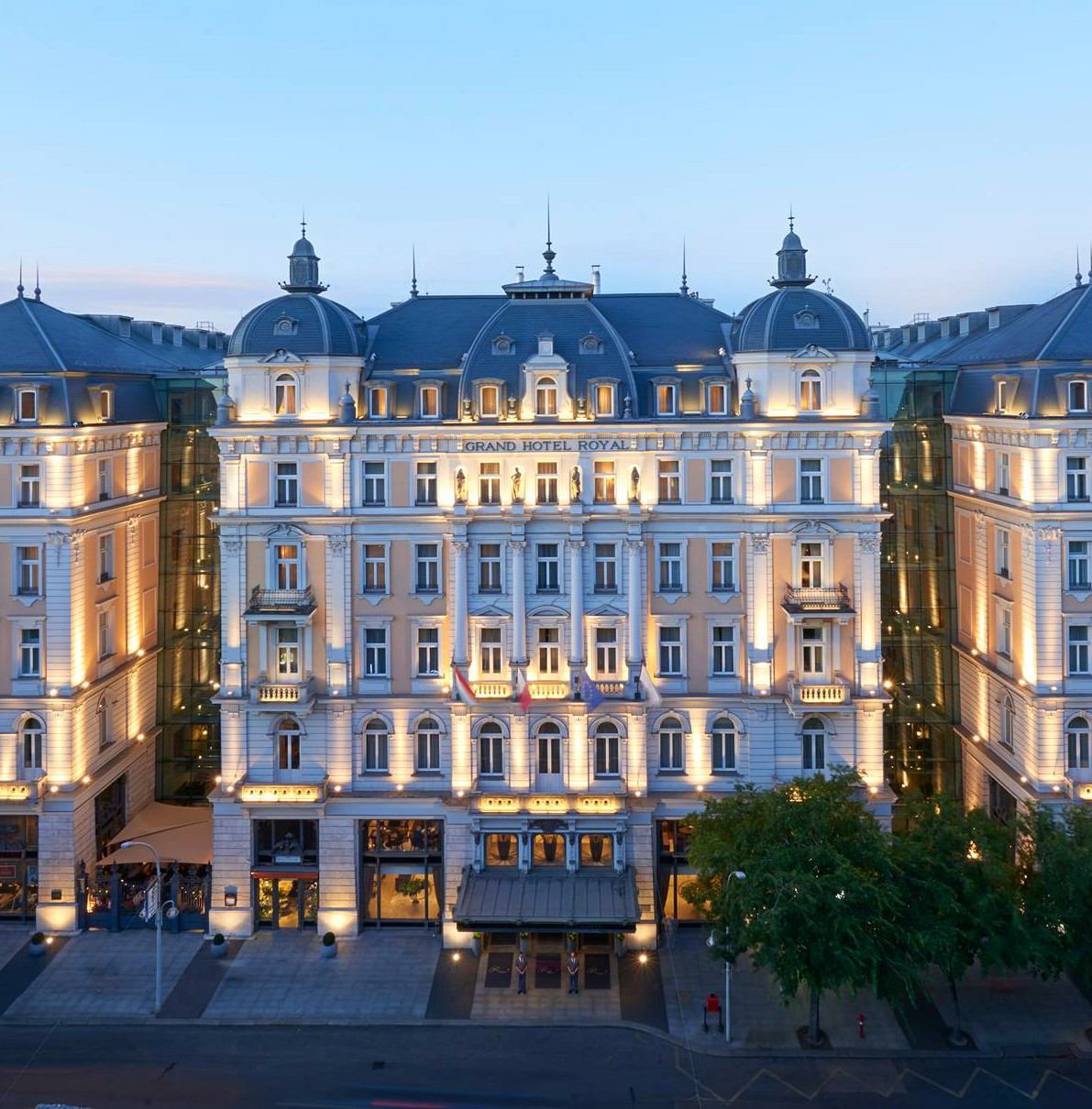Hotels with a Past
Hotel With A Past: Corinthia Hotel Budapest in Hungary
Straddling the famous Danube River is the iconic Chain Bridge, connecting “Buda” on the west to “Pest” on the east, which together now form Hungary’s capital city. Along these river banks are some of Hungary’s important historical landmarks from the Gothic revival parliament building to the Medieval towers of Fisherman’s’ Bastion.
But sprinkled throughout the city some call “The Paris of the East” are notable histories you won’t always read about in guidebooks. Right in the heart of Budapest stands the Corinthia Hotel—an historic landmark that spans more than 100 years. It was originally built as the Grand Royal Hotel back in 1896.
In later years, it was taken over by Gestapo forces for office space in World War II, and then badly destroyed by the Soviets trying to stop the Hungarian Revolution. Yet despite each setback, it has continued to reinvent itself as one of the city’s finest hotels.
It all began in 1896 when Hungary celebrated its 1,000th birthday with an elaborate Millenium Exhibition in Budapest. The festivities attracted throngs of dignitaries and distinguished travelers from all over the world.
The Grand Hotel Royal opened to accommodate the visitors and impress society’s elite. “The hotel at the time opened with 362 rooms and for a very long time until the late ‘30s, was Europe’s largest hotel,” said Tibor Mescal, Senior Deputy Manager at the Corinthia Budapest.
The Grand Royal was situated on the biggest piece of real estate on the city’s main artery. It had unrivaled amenities that were considered luxurious at the time—things we take for granted today, like private bathrooms in the guest rooms.
“The facilities were very new and modern at the time,” Mescal elaborates. “The elevators were gas operated and also every room had a telephone line which in that time was very unusual to have.” Tibor Mescal should know—he’s worked here since he was a young man, some 40 years.
“The interest was from all sides to try it—not to mention the luxury—you can find it here in the bars, restaurants, saloon, cafes, which was popular among the politicians, Hungarian writers, composers, and poets,” Mescal continues.
But what put it on the map was a public screening of the first ever motion picture only two weeks after the hotel opened. The ballroom was transformed into a theater for the film by the Lumiere Brothers. People were hooked.
“It was very surprising to them because it was advanced technology,” Mescal continues. “In those days, coming to the movies was like going to the moon. They’d have a nice dinner before the show & champagne after to discuss what they have seen. It was an absolute overnight success.”
Film became so popular in Budapest years later that the hotel’s ballroom was converted into the 1000-seat Royal Apollo Cinema and screened newsreels as well as movies.
“It was 1915, the time of World War I,” Mescal elaborates. “Unfortunately in that time there was no mind for lavish dinner dances and balls so the cinema was the right answer to inform the public and make the hotel even more popular than it was before.”
The hotel’s glory days didn’t last. During World War II, it closed for business as Gestapo forces took over the building & used it as office space.
There are many reasons the hotel was used by the German army. “First, these facilities supplied every need for the army headquarters,” Mescal explains. “We had in every single room like I mentioned earlier a telephone line, which were still working & could keep in touch with the rest of the world. Not to mention we had our own generator in the hotel. That means when whole Budapest was blackened out we still had lights. And very important, we had thermal water spa, so there was warm water when needed.”
After World War II, the Grand Royal reopened in 1953, until the Hungarian Revolution of 1956. When local activists were protesting the communist Soviet influence. The Soviets fired on the city to suppress the movement and badly damaged the hotel.
The Grand Royal closed for a second time, but reopened five years later as a very different looking hotel. “From 1961 to 1991, a period of 30 years,” Mescal explains, “the hotel served the communist era which makes it very historical and interesting.”
The 1960s version of the Grand Royal was thought to be pretty racy for a hotel behind the Iron Curtain. The first jazz in Budapest was played here and the hotel’s interiors flaunted the mid-century modern fashion of the time. The Royal Apollo Theater became the Red Star Theater. But it still couldn’t survive, closing its doors for a third time.
“The hotel closed on Oct 30, 1991, a very sad day,” Mescal explains. “All the workers, 400 people, gathered and took a big photo to commemorate the closing day. At the time it was necessary because the rooms were badly run-down. At the time, the company who managed the hotel didn’t have enough money to do the necessary refurbishments.”
It sat empty for almost ten years, until its next and current phase as The Corinthia Hotel Budapest. The new owners restored the entire grand dame hotel, keeping only the French Renaissance facade and the ornate ballroom, which is no longer a theater.
Although there are some similarities to the old hotel, today you’ll find contemporary changes, including a new lobby and a new spa. Guest rooms were updated and expanded. The entire top floor of the Corinthia is now the Presidential Suite, which is the largest hotel room in Hungary.
“One of the most controversial & interesting people I’ve ever welcomed in this hotel was President Gorbachev,” explains Mescal. “So President Gorbachev is a great person. I escorted him to the presidential suite and he turned around, said it’s very nice, can you escort me and show me the facilities. that was a nice intimate side to him that he let me get close to him, leaving the bodyguards totally outside. Only me and him face to face in the glorious Presidential Suite.”
Hollywood put the hotel in the spotlight recently. Some believe the old Grand Royal was inspiration for the Oscar-nominated The Grand Budapest Hotel. Mescal thinks others will be lured by his city’s charms.
Budapest is becoming increasingly more popular to visit. It is relatively cheaper than other European cities, boasts old world charm, and is brimming with history. We got a nice glimpse of that here—at this hotel with a past.
To see more unique and historic hotels with history, check out:
- From Sugar Mill to Hotel: The Buccaneer in St. Croix, U.S. Virgin Islands
- Home to a Beloved Literary Character: The New York Plaza
- The Roots of American History: Kingsmill Resort in Williamsburg, Virginia
By Tracy Gallagher and the Peter Greenberg Worldwide team for PeterGreenberg.com








